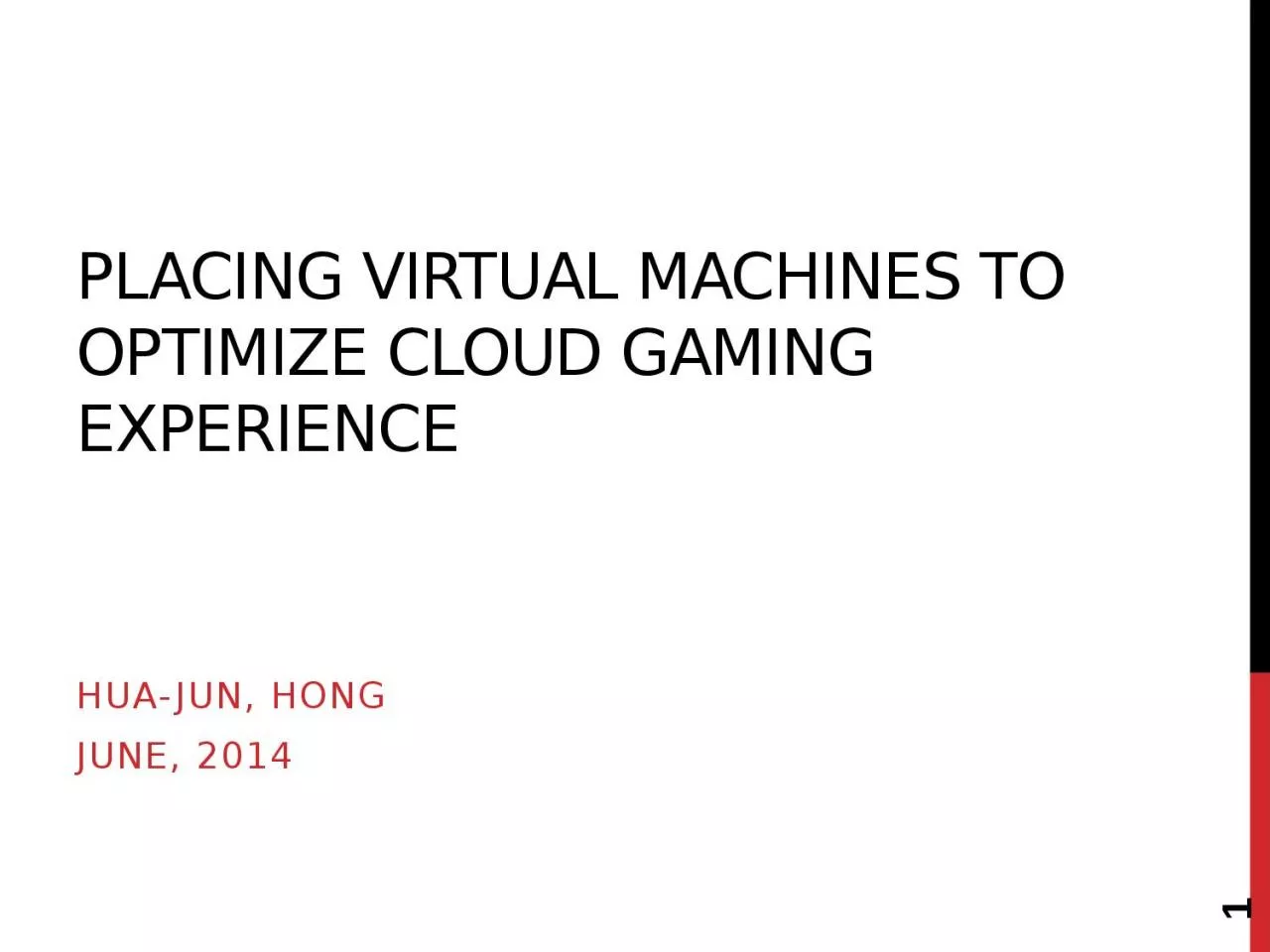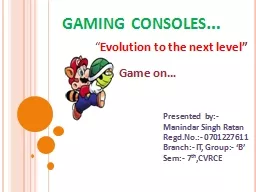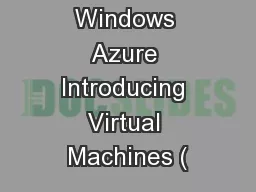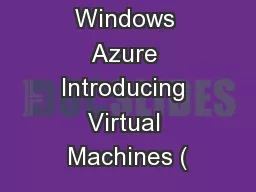PPT-Placing virtual machines to optimize cloud gaming experience
Author : audrey | Published Date : 2023-06-22
HuaJun Hong June 2014 1 Publications H Hong D Chen C Huang K Chen and C Hsu QoS aware virtual machine placement for cloud games in Proc of ACM Annual Workshop
Presentation Embed Code
Download Presentation
Download Presentation The PPT/PDF document "Placing virtual machines to optimize clo..." is the property of its rightful owner. Permission is granted to download and print the materials on this website for personal, non-commercial use only, and to display it on your personal computer provided you do not modify the materials and that you retain all copyright notices contained in the materials. By downloading content from our website, you accept the terms of this agreement.
Placing virtual machines to optimize cloud gaming experience: Transcript
Download Rules Of Document
"Placing virtual machines to optimize cloud gaming experience"The content belongs to its owner. You may download and print it for personal use, without modification, and keep all copyright notices. By downloading, you agree to these terms.
Related Documents














